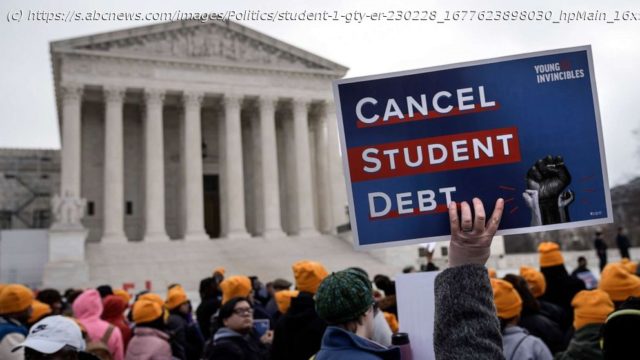Array
Millions of federal student loan borrowers could soon pay less money back on their debt and be on the hook for a shorter amount of time, should a proposed Biden administration rule take effect later this year.
The new rule, which aims to revise the government’s loan payment system in favor of borrowers, comes as the White House’s broader, more well-known push to cancel millions of loans remains on hold before the Supreme Court, with a decision expected by summertime.
But if that plan is overturned, President Joe Biden’s revisions to the repayment system, detailed in dense handouts and data-heavy bullet points from the administration, could become one of his most significant remaining avenues to reduce student borrower debt over criticisms from conservatives of a „giveaway.“
The Department of Education began the regulatory process to bring the new loan repayment rule into effect more than a month ago, on Jan. 10 — but the exact timing for when student borrowers could take advantage of the new payment plan remains unclear.
And while the plan was first announced last year alongside Biden’s student debt cancellation policy back in August, the repayment changes are separate from that lawsuit and haven’t seen any legal challenges so far.
The new plan would revise and expand the Revised Pay As You Earn (REPAYE) Plan, essentially aiming to make it the most common repayment plan for borrowers who qualify.
As one of the government’s four current income-driven repayment plans, the REPAYE Plan ties the amount borrowers owe each month to the amount they make in income.
Roughly 8 million Americans are already enrolled in income-driven repayment plans and could feel the effects of the new change.
Under the new plan, the lowest-income borrowers would see their payments fall by about $0.83 per each dollar they owe, the Department of Education estimated, because they would be allowed to pay smaller minimum payments each month.
The highest-income borrowers would see their payments per dollar fall by about $0.05.
The changes would also exempt the lowest-income Americans from paying monthly minimums at all, stop unpaid monthly interest from accruing and allow debts to be forgiven sooner — between 10 and 20 years after the loans were taken out.
The regulatory process could take any number of months, though it will likely not be finalized before springtime at the earliest, a source familiar with the discussions previously . The application process would roll out after that.
Department of Education Undersecretary James Kvaal called the repayment changes the first „true student loan safety net in this country,“ while Education Secretary Miguel Cardona told reporters in January that the proposed rule is the most influential part of the Biden administration’s plan to decrease federal student loan debt.
Start
United States
USA — mix What to know about Biden's other student loan plan, to lower payments...






